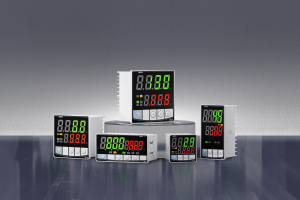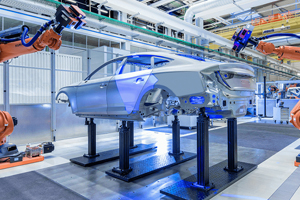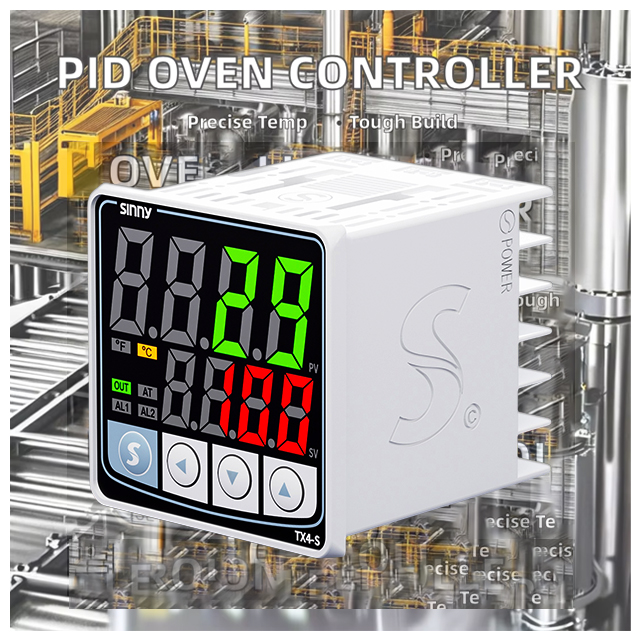temperature controller?
1. What is the 240V PID temperature controller?
A PID Temperature Control, at its heart, is a device that continuously adjusts an output signal on the basis of feedback. The name of the device reveals its two main aspects.
AC 240V : The type of power required by the controller to function. The majority of industrial controllers and high power controllers use the standard Alternating current (AC) of 240V found in most countries around the world. 厂PID controls constantly monitor the temperature using an attached sensor. They compare it with the setpoint (SP) and calculate the appropriate control actions based on that difference.
These controllers have an input port that can be used to connect a sensor, such as a thermocouple (or Resistance Temperature Detector – RTD), and an output port which is capable of driving relays or Solid State Relays. The output devices are intermediaries that safely modulate or switch the high-power heating element (e.g. an element, boiler or heating wire) according to the calculated signal from the controller. The closed-loop system of feedback allows the controllers to correct for any deviation from setpoint temperatures, maintaining them with a remarkable level of consistency.
Proportional: The component responds to the currently occurring error. The stronger the correction, the larger the error is (the difference between PV and SP). Output is proportional with the error. Pure proportional control can leave a residual error, also known as steady state error. This is because the method does not account for previous errors or future trends.
Integral: The component takes into account the cumulative error in time. The output is adjusted to remove the residual error from the proportional action. Over time, this ensures the temperature approaches the setpoint closer. Too much Integral can make the system overly sensitive, and even oscillate.
Derived (D): The component is a predictor of future errors, based upon the change rate in the error. The temperature rises or falls in response to the rate of change. The Derivative Action can anticipate the error and apply a brake force (or boost), to stop the temperature from exceeding or significantly undershooting its setpoint. The system becomes more responsive and stable.
Tuning is the process of finding an optimal setting for these three parameters. (P,I,D settings) according to a system or application. A balance is needed to ensure fast response time, minimum error and stable control, without oscillation. Many controllers today have AutoTune functions which automatically tune the system by creating a controlled disturbance and monitoring its response. This simplifies the installation for those who are not control engineers.
2. Important Components to Consider and Features To Look for
When choosing or using a PID temperature controller several features and components are important to its performance and functionality.
Sensor input: It is important that the sensor be compatible with other standard sensors. J-Type inputs, K-Type inputs (thermocouples), and Pt100/Pt1000 inputs (RTDs) are all common. Sensor signals must be accurately read by the controller.
User Interface and Display: A display (LED screen or LCD) that clearly displays the Setpoint (SP) and Process Variables (PV), as well as other parameters such PID coefficients, is required. Interface (knobs and dials), must be intuitively and easily adjustable.
Capabilities for Programming: Search for controllers that offer accessible programming of Setpoint, P I D parameters. For complex thermal processes, features like Setpoint Hold (which holds the temperature at a preset value), Ramp/Soak and pre-set programmes are useful.
Alarm Functions Lower and Upper Limit Alarms are crucial for process safety. They can trigger an output alarm (relay contact) or an audio/visual warning when temperatures exceed safe operating levels.
3. The output stage: It is important. High-power outputs include:
Solid State Relay Output (SSR). Enables smooth and continuous power control using pulse width modulation (PWM), or phase angle firing with precision (commonly used for heating elements). This allows for very fine temperature adjustment. It is often equipped with anti-saturation functions to avoid relay damage.
Output Relay: This output provides a simple ON/OFF switch to control a different device that controls high power (like a relay or contactor). It is suitable for large motors and high power circuits, but it lacks the fine-tuned control that an SSR provides.
Input Power: The input power must be compatible with local voltages (typically between 220-240V).
Quality of Construction: Industrial grade controllers are often robustly constructed, with appropriate insulation and protective ratings (like IP ratings), suitable for harsh environments.
What is the 240V PID controller used for?
Imagine that you are heating a kiln to precisely 1000degC.
The controller is connected with a temperature sensor, such as a K type thermocouple.
The Process variable (PV),, is used to measure the temperature of the kiln.
By comparing the PV and the SP, the controller can calculate the Error.
The controller uses its internal PID algorithm to calculate a signal for control based on the error.
The calculated signal will be sent to the output (SSR, Relay) stage.
This output stage controls the amount of power that is delivered to the heating elements in the kiln:
The output signal will increase if the kiln temperature is low (positive error). This allows more power for the elements.
The output signal will decrease if the kiln temperature is excessive (error negative), resulting in a reduction of power for the elements.
Controllers can adjust their settings proactively by calculating the rate at which the temperature of the kiln changes (Derivative Action).
The controller can fine-tune power over time to achieve the set point by accumulating the history of errors (Integral Action).
The process is repeated thousands of times every second. This allows the temperature to be maintained as closely as possible at 1000degC.
What are the applications of 240V PID controllers?
The PID temperature controllers are versatile and can be used in many different fields.
Industrial processes: Kilns and furnaces for ceramic, glass or pottery, heat treatment ovens to treat plastics, soldering station, drying ovens.
Scientific Research & Laboratory : Growth chambers (incubators), centrifuges and chemical reactors.
Beverage & Food: Canning, Espresso, Deep Fryer, Pool Heaters (often requiring an interface via a 3-wire thermostat probe).
HVAC: Control precise climate for sensitive environments. Simpler controllers are often sufficient for home and office systems.
Projects for Hobbyists: Laser cutters and advanced kilns. Custom aquarium heaters are also available (designing them requires care).
Choose the right 240V PID controller for your needs
Output power required: Compare the output of the controller (power rating SSR, relay switching capability) with the electrical load (amps or volts) you want to control.
Features for PID tuning: Can the controller be manually tuned? Does the controller have an Auto-Tune feature? What is the ease of use for programming?
Clarity of display: Can you read the screen in your environment? The programming menu is it logical?
According to the wiring diagram provided by the manufacturer, connect the mains input of the controller (L1, N, L2, Earth) to an appropriate fused power source.
The temperature sensor should be connected to the input terminals. Make sure that the polarity is correct (especially with thermocouples).
Connect the output terminals with the Solid State Relay or Relay. Be sure to pay attention to the diagram that comes with your SSR/controller. Pay special attention the the terminals marked as Common (COM), Normal Open (NO), or Normally Closed(NC).
Initial Configuration Turn on the controller. Let it initialize. You may need to enter a programming mode to select the temperature scale (Celsius/Fahrenheit), calibrate the sensor (if required), and set the initial Setpoint.
4. Tuning your vehicle for optimal performance
The PID parameter (P I D) will need to be fine-tuned for the load and environment you are working in. Many modern controllers make this process simpler.
Manual tuning: This involves increasing the gain P until the system oscillates. Then adjust D to stabilize the system, before using I to remove the residual error. It is important to have a thorough understanding of the process and pay attention.
Autotune: A method that many people prefer. Autotune is a feature that most controllers offer. This usually involves performing a short step-change in the Setpoint when the process (or a sequence) is stable. The controller monitors system response, and calculates automatically the best P, I, and D values to use in its algorithm. The initial tuning is significantly simplified.
Troubleshooting common issues
Even after careful installation, problems can occur. There are a few common issues with PID controllers, and possible solutions.
Oscillation or Temperature Overshoot: This is often due to PID parameters that are too aggressive (too large P or I). Reduce P and I. Verify that the sensor is not noisy or if there are unstable loads. Check that the sensor is calibrated and the type of sensor used by the controller.
A slow temperature response: This could be caused by conservative PID parameter settings (low P), sensor damage or incorrect placement, an inoperative controller, or a large load that requires more control. Increase P. Also, check sensor connections and the condition of your load.
Output stuck or controller not responding: Verify all connections. Verify that the sensor input is working correctly, and is providing a valid signal in the range of the controller. Check the output wiring of the SSR/Relay. Verify for any internal problems (replace as necessary).
Wrong Temperature reading: Sensor calibrating could be wrong. Verify sensor compatibility with controller (cold junction compensating for thermocouples) and check settings. Verify that the sensor wires are not damaged or faulty.
Not working alarms: Check that the Alarm Setpoint Limits are configured correctly. Verify that sensor readings trigger the alarm. Check the output wiring of alarms and any connected devices (e.g. an alarm light, relay contact, etc.).
5. The Tool for Precision Control
PID Temperature Control offers more than a simple thermostat. It is an advanced feedback system that is designed to provide precision. The PID algorithm allows users to control temperature in many demanding applications using standard 240V power. Understanding the capabilities and principles of PID controls can help operators improve the efficiency of their processes, the quality of the product, and the overall outcome. To harness the potential of this control technology, careful selection, correct installation and meticulous tuning is key.























